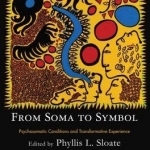From Soma to Symbol: Psychosomatic Conditions and Transformative Experience
BookThis item doesn’t have any media yet
2016 | Medical & Veterinary
This book traces the theoretical history of psychosomatics in psychoanalysis, and with it the ways that psychoanalytically-trained clinicians have tried to understand and treat patients with complex psychosomatic symptoms. It offers a rethinking of the mind-body relationship in psychoanalysis, eschewing past dichotomies between the psychological and the corporeal, and today's either-or distinctions between symbolizing and non-symbolizing patients. Theoretical and clinical issues are considered from a broad and integrative perspective. Psychosomatic patients' best interests are served neither by an indiscriminate embrace of dazzling new findings, nor by discarding established ways of understanding them. This volume exemplifies an approach that takes advantage of the rich history of the past as well as exciting new work in the neurosciences. The opening historical chapter delineates the evolution of the field of psychoanalytic psychosomatics.
Out of the reductionism and divisiveness of the past, through a growing rapprochement between the American and French psychosomatic traditions, to the thoughtful integration of the work of allied disciplines, an emerging international perspective has emerged that has re-energized interest in psychoanalytic psychosomatics and holds much promise for our patients. This is also a clinician's book, however, aimed at helping psychoanalytic and psychodynamically-oriented clinicians to work more comfortably and productively with psychosomatic patients. The case histories are full of useful ideas about how to engage and maintain these challenging and vulnerable people in treatment. Clinicians will find many imaginative approaches to helping a patient know her own mind (often for the first time), and become capable of genuine aliveness, relatedness, and mutuality. There are also hints for dealing with the intense countertransference almost universal with these patients, which may be the analyst's chief source of understanding when words fail or are absent altogether.
In addition, richly detailed discussions suggest how the new theoretical and clinical integration may apply to other patients with impaired symbolizing capacities, greatly extending the book's clinical usefulness.
Related Items:
| Published by | Karnac Books |
| Edition | Unknown |
| ISBN | 9781782201274 |
| Language | N/A |
Images And Data Courtesy Of: Karnac Books.
This content (including text, images, videos and other media) is published and used in accordance
with Fair Use.
